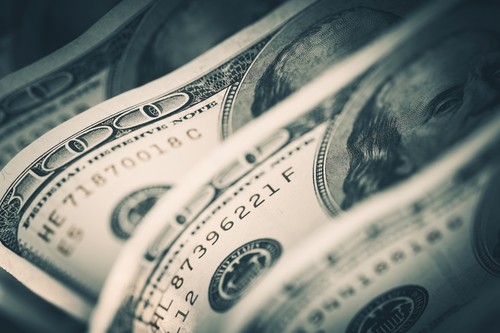The dollar is not a currency like any other; it is also the international currency. For more than 50 years, the dollar has been the world’s reference currency.
Our Forex Signals
1 - month
Subscription
 Up to 15 signals daily
Up to 15 signals daily 76% success rate
76% success rate Entry, take profit & stop loss
Entry, take profit & stop loss Amount to risk per trade
Amount to risk per trade Risk reward ratio
Risk reward ratiomonth
3 - month
Subscription
 Up to 15 signals daily
Up to 15 signals daily 76% success rate
76% success rate Entry, take profit & stop loss
Entry, take profit & stop loss Amount to risk per trade
Amount to risk per trade Risk reward ratio
Risk reward ratiomonth
 Most popular
Most popular
6 - month
Subscription
 Up to 15 signals daily
Up to 15 signals daily 76% success rate
76% success rate Entry, take profit & stop loss
Entry, take profit & stop loss Amount to risk per trade
Amount to risk per trade Risk reward ratio
Risk reward ratiomonth
Lifetime
Subscription
 Up to 15 signals daily
Up to 15 signals daily 76% success rate
76% success rate Entry, take profit & stop loss
Entry, take profit & stop loss Amount to risk per trade
Amount to risk per trade Risk reward ratio
Risk reward ratioSeparate Swing Trading Group
 Up to 3 signals weekly
Up to 3 signals weekly 76% success rate
76% success rate Entry, take profit & stop loss
Entry, take profit & stop loss Amount to risk per trade
Amount to risk per trade Risk reward ratio
Risk reward ratiomonth
1 - month
Subscription
 Up to 15 signals daily
Up to 15 signals daily 76% success rate
76% success rate Entry, take profit & stop loss
Entry, take profit & stop loss Amount to risk per trade
Amount to risk per trade Risk reward ratio
Risk reward ratiotime
Half of world trade is in US currency, over 64% of central bank reserves are denominated in US dollars.
3
Payment methods
Trading platforms
Regulated by
Support
Min.Deposit
Leverage max
Currency Pairs
Classification
Mobile App
Min.Deposit
$100
Spread min.
Variables pips
Leverage max
100
Currency Pairs
40
Trading platforms
Funding Methods





Regulated by
FCA
What you can trade
Forex
Indices
Actions
Cryptocurrencies
Raw Materials
Average spread
EUR/GBP
-
EUR/USD
-
EUR/JPY
0.3
EUR/CHF
0.2
GBP/USD
0.0
GBP/JPY
0.1
GBP/CHF
0.3
USD/JPY
-
USD/CHF
0.2
CHF/JPY
0.3
Additional Fee
Continuous rate
Variables
Conversión
Variables pips
Regulation
Yes
FCA
No
CYSEC
No
ASIC
No
CFTC
No
NFA
No
BAFIN
No
CMA
No
SCB
No
DFSA
No
CBFSAI
No
BVIFSC
No
FSCA
No
FSA
No
FFAJ
No
ADGM
No
FRSA
71% of retail investor accounts lose money when trading CFDs with this provider.
Min.Deposit
$100
Spread min.
- pips
Leverage max
400
Currency Pairs
50
Trading platforms
Funding Methods




Regulated by
CYSECASICCBFSAIBVIFSCFSCAFSAFFAJADGMFRSA
What you can trade
Forex
Indices
Actions
Cryptocurrencies
Raw Materials
Etfs
Average spread
EUR/GBP
1
EUR/USD
0.9
EUR/JPY
1
EUR/CHF
1
GBP/USD
1
GBP/JPY
1
GBP/CHF
1
USD/JPY
-
USD/CHF
1
CHF/JPY
1
Additional Fee
Continuous rate
-
Conversión
- pips
Regulation
No
FCA
Yes
CYSEC
Yes
ASIC
No
CFTC
No
NFA
No
BAFIN
No
CMA
No
SCB
No
DFSA
Yes
CBFSAI
Yes
BVIFSC
Yes
FSCA
Yes
FSA
Yes
FFAJ
Yes
ADGM
Yes
FRSA
71% of retail investor accounts lose money when trading CFDs with this provider.
Min.Deposit
$50
Spread min.
- pips
Leverage max
500
Currency Pairs
40
Trading platforms
Funding Methods




What you can trade
Forex
Indices
Actions
Raw Materials
Average spread
EUR/GBP
-
EUR/USD
-
EUR/JPY
-
EUR/CHF
-
GBP/USD
-
GBP/JPY
-
GBP/CHF
-
USD/JPY
-
USD/CHF
-
CHF/JPY
-
Additional Fee
Continuous rate
-
Conversión
- pips
Regulation
No
FCA
No
CYSEC
No
ASIC
No
CFTC
No
NFA
No
BAFIN
No
CMA
No
SCB
No
DFSA
No
CBFSAI
No
BVIFSC
No
FSCA
No
FSA
No
FFAJ
No
ADGM
No
FRSA
71% of retail investor accounts lose money when trading CFDs with this provider.
Despite the crises, the dollar remains the untouchable. Where does this super currency status come from?

Let’s find out in this article.
Dominance of Dollar in international market
A “global” currency is a currency that is acknowledged in all exchanges around the globe.
Few world currencies like US dollar, euro and yen – are received for most international dealings.
Among these currencies, the US dollar is the most widely used.
However, there is no official global currency. One more name for “global currency” is “reserve currency”.
The US dollar accounts for 64 % of the reserve (reserve currency) of central banks around the world.
For example, the BCEAO has no choice but to hold US dollars, for the simple reason that countries in the CFA zone must import products (e.g. oil) that must be paid in US dollars. The dollars used to buy oil is called “petrodollars”.
A petrodollar is an American dollar that is received by an oil producer in exchange for the sale of oil, and which is then deposited in US banks.
Despite the apparent simplicity of this “dollars for oil” arrangement, the petrodollar system is actually very complex and has many moving parts.
One of the reasons for the strength of the US dollar is its role as the world’s reserve currency.
This means that most countries will accept the dollar as a method of payment, even in place of their own currency.
Nearly 50% of all international trade is in dollars, and most oil contracts must be paid in dollars.
Nearly US $ 580 billion worth of US notes are being used outside the United States which is 65 % of all dollars.
This includes 75% of the $ 100 notes, 55% of the $ 50 notes and 60% of the $ 20 notes.
The majority of these notes are in the countries of the previous Latin America and Soviet Union.
Hard Cash (banknotes and coins) is only a hint of the role of the dollar as a world currency.
One-third of the global gross domestic product comes from countries that back their currencies to the US dollar.
These incorporate 7 countries that have adopted the dollar. The others 89 keep their exchange in a narrow range of fluctuation against the dollar.
The US dollar is the king in the overseas exchange market. At least 85 % of currency trades involve the US dollar. In addition, 39 % of global debt is provided in US dollars.
Thus, the demands of US dollars have increased significantly on foreign banks.
In an effort to liberalize international trade and finance post-war reconstruction, developed countries agreed to fix exchange rates for their currencies by pegging it to the US dollar. This is how the golden age of the US dollar began.
How the US dollar has become the “global currency” and a powerful currency
The dollar became the most used currency in the world thanks to the Bretton Woods agreement in 1944.

At that point, the value of the United States dollar was supported by its gold value, and the US held the biggest amounts of gold.
This has permitted other countries to use the dollar as a reference for their currencies other than gold.
Why the dollar? The United States held three quarters of the world’s gold production.
The value of the dollar was set at 1/35 of an ounce of gold, which in itself was a bit of a way to use the gold standard.
The Bretton Woods system therefore established the US dollar as the “world currency”, ending the gold standard system.
He created the World Bank and the International Monetary Fund (IMF), two global organizations mandated to oversee the new system.
Since the United States was the only country with the ability to print dollars, the system established the United States as the major power behind these two organizations, and the global economy.
In 1970s, nations started urging gold for the US dollars they held to fight inflation.
For fear of exhausting all their gold reserves, US President Nixon decided to detach the gold from dollar.
However, the dollar had already turned into the dominant reserve currency in the world.


